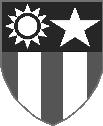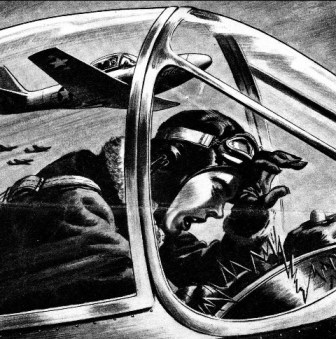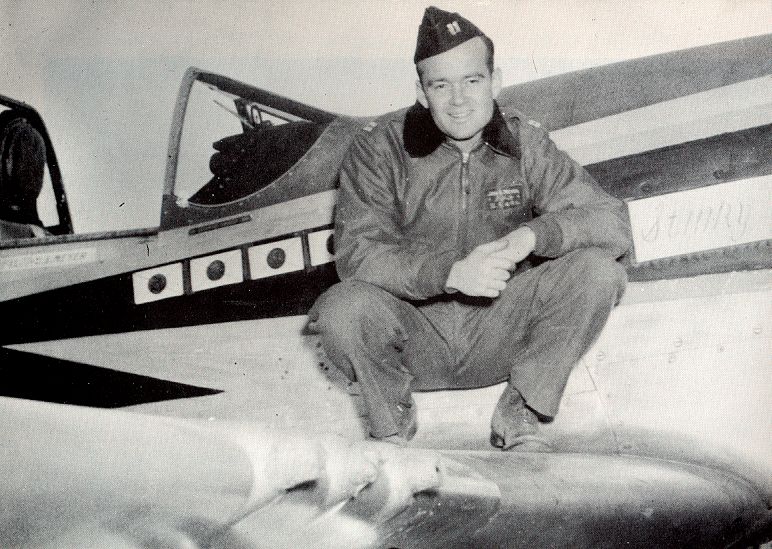 My Favorite War Story
My Favorite War StoryInter-plane radio saved the captain, but not his buddy
By MOSCRIP MILLER
 CLICK IMAGE TO ENLARGE |
Twenty-one-year-old Capt. John E. Meyer of Birmingham, Ala., with four Jap planes to his credit, was leading a flight of P-51's in a raid on Jap shipping at Kurkiang. The ack-ack was heavy as the planes,flying in formation, dropped their bombs on the target with pin-point precision, then swung around in a sharp bankto go back and finish off the job with low-level strafing.
It was on the steeply-banked turn that a 40-mm shell hit the nose of Meyer's ship, explodingon impact and blinding the young pilot with shattered glass. Miraculously, he was not killed - but his plane wasfalling out of control as he called calmly over the inter-plane radio, "I'm out of it, boys. That hit blinded me.Polish off the - - - - for me."
But Meyer's wingman, Lt. John F. Egan, also just 21, from Fort Lauderdale, Fla., had other ideas. Sizing up the situation at a glance, he called to Meyer, the only casualty of this bomb run, to follow his instructions.
As Egan gave the orders by radio, the blinded Meyer, responding almost automatically,pulled back on the stick while bringing his left wing up, and leveled off the falling plane. But then the blindpilot faced a new threat - from a flight of Jap Tojos and Oscars coming in to finish off the obviously crippledplane.
The alert Egan saw them and called a warning. He had Meyer continue on course, but the other planes of his flight rallied around the crippled ship, as if they were runninginterference in a football game. The other Japs hesitated, in spite of their numerical advantage, and that hesitation saved Meyer again.
Egan was now flying side by side with his blinded pal, keeping up a steady stream of conversationover the inter-plane radio.
"How you doing, Stinky? This ought to be a cinch for you. You always were good at blind flying,and this is it - but good! More right rudder, there. Nose down a bit. You're doing fine. Only another half hourand we'll be home."
It was a one-sided conversation. Meyer was too weak from loss of blood, too shaken to do morethan just follow the instructions that kept ringing in his ears. Egan's voice was serving as his eyes.
Then, suddenly, he heard Egan talking to the control tower at the home field. They were goingto land. The realization roused Meyer.
Once around the field with half flaps into the wind. Egan was calling out the air speed and altimeter readings as he flew alongside Meyer. Then the ground came up gently to meet the approaching planes. Egan had guided the sightless pilot squarely onto the runway.
Warned in advance by the control tower, medics were waiting for Meyer. Eventually, he wouldregain his sight. But two days later, while Meyer was resting in a hospital, Jack Egan was lost over Hong Kong.
 |
My Favorite War Story
LOOK Magazine
May 29, 1945
 Moscrip Miller LOOK war correspondent |
THIS PAGE IS DEDICATED IN MEMORY OF 2nd Lt. JOSEPH F. SCHWARTZ
P-40 and P-51 fighter pilot with the 75th Fighter Squadron, 23rd Fighter Group, 14th Air Force in China.
The story is from the 118th Tactical Recon Squadron of the 23rd Fighter Group.
Photo of Capt. Meyer and original article from LOOK shared by Terry Schwartz.
Copyright © 2007 Carl W. Weidenburner
TOP OF PAGE ABOUT THIS PAGE